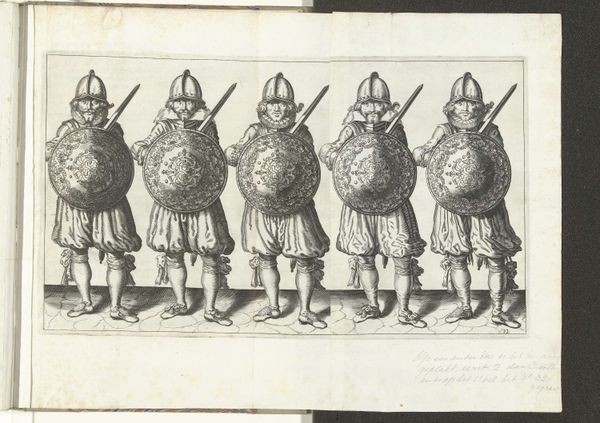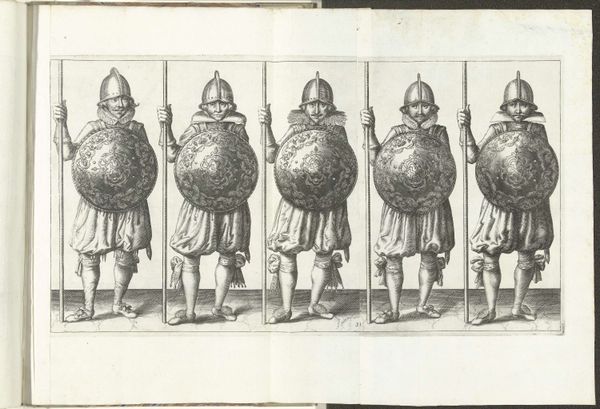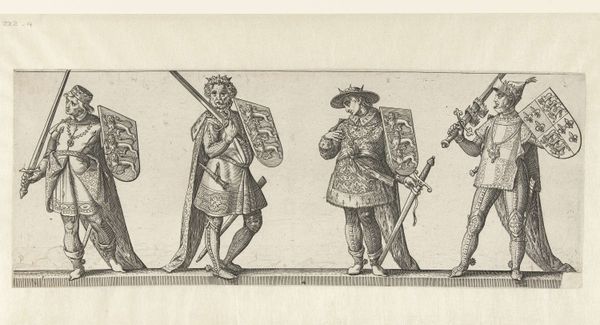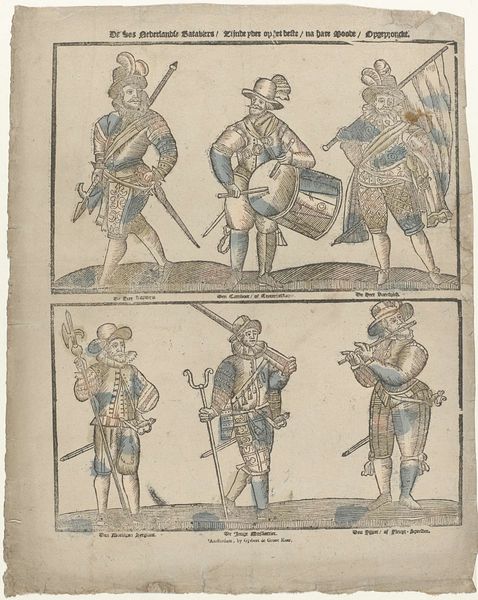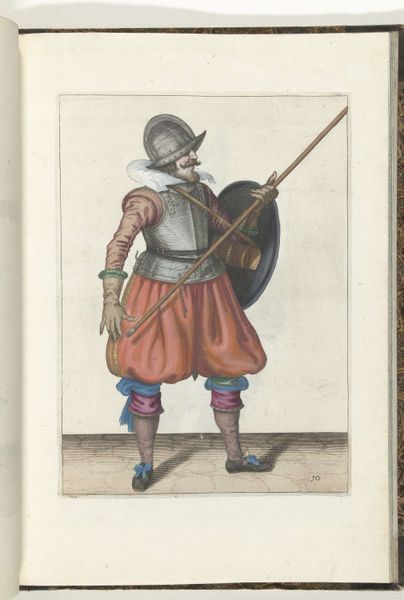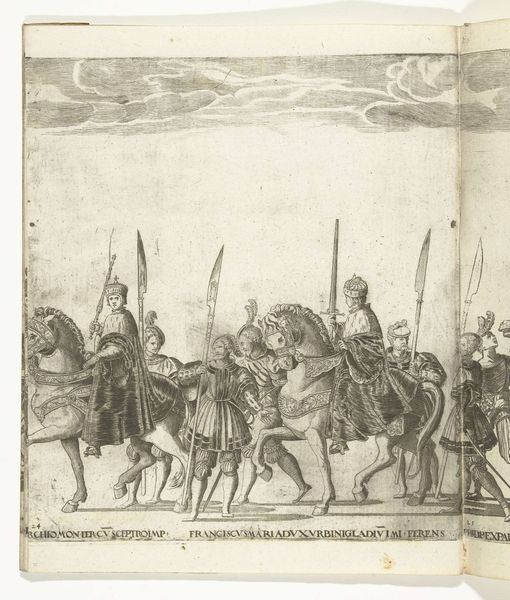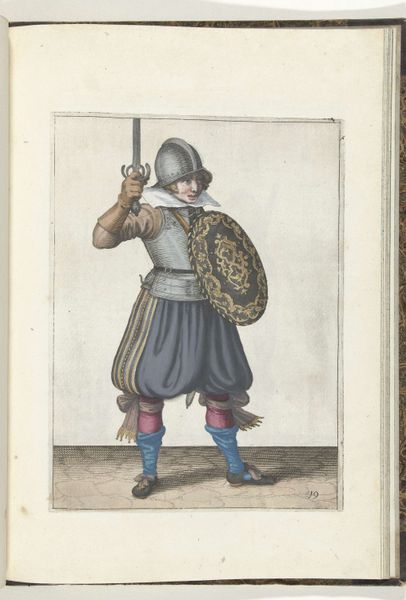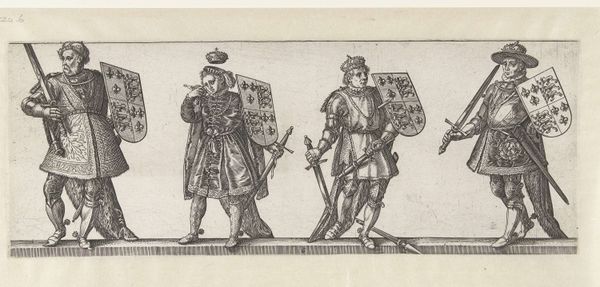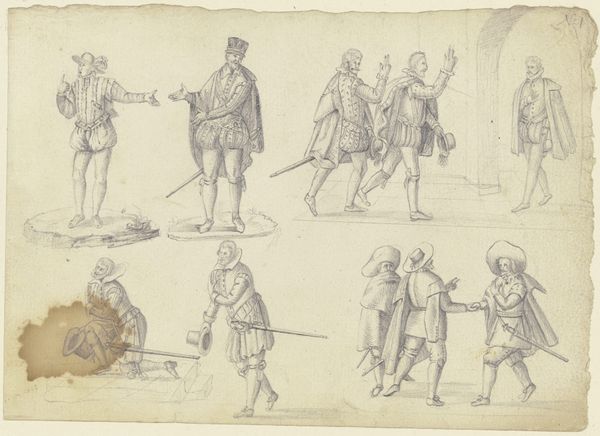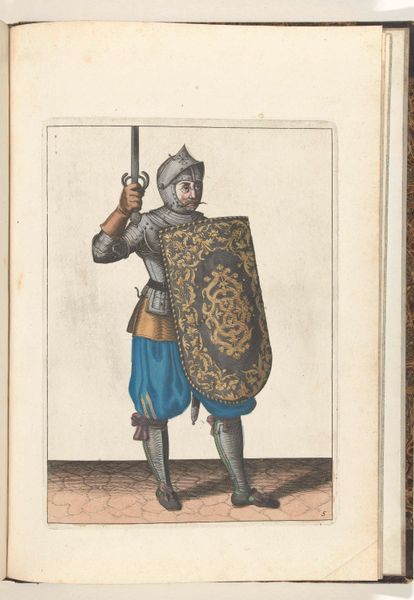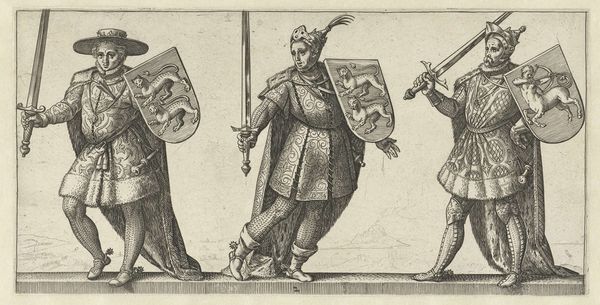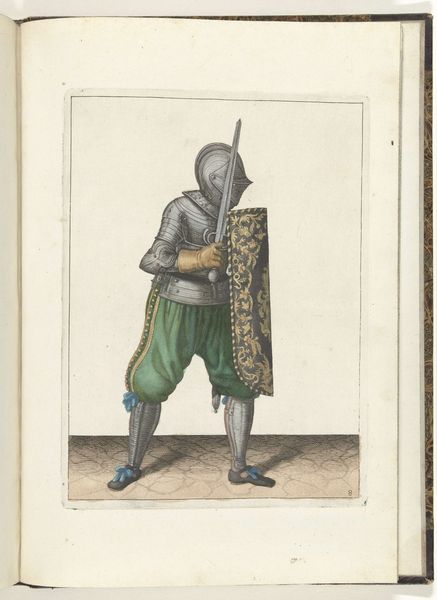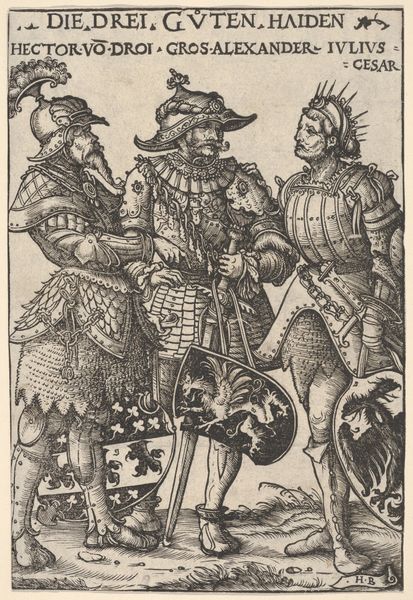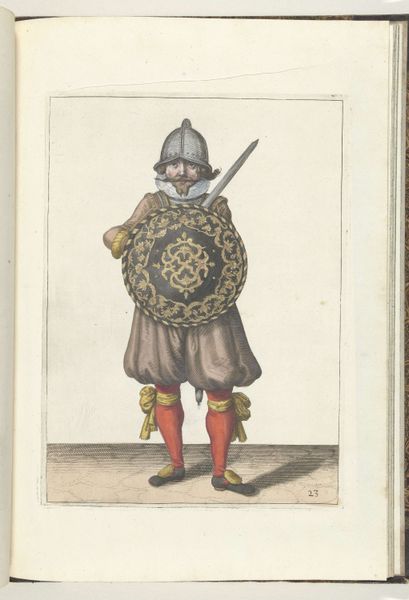
De exercitie met schild en spies: vijf soldaten staande naast elkaar in het gelid met de spies in de rechterhand rustend op de grond en het schild voor de borst (nr. 31), 1618 1616 - 1618
0:00
0:00
drawing, print, paper, watercolor, ink, pencil
#
drawing
#
narrative-art
#
dutch-golden-age
# print
#
figuration
#
paper
#
watercolor
#
ink
#
group-portraits
#
pencil
#
history-painting
#
academic-art
Dimensions: height 260 mm, width 480 mm
Copyright: Rijks Museum: Open Domain
Curator: This piece is "De exercitie met schild en spies: vijf soldaten staande naast elkaar in het gelid met de spies in de rechterhand rustend op de grond en het schild voor de borst (nr. 31)", created by Adam van Breen between 1616 and 1618. It employs watercolor, ink, and pencil on paper. Editor: Wow, quite a mouthful of a title! My immediate impression is of...well, they look a bit like costumed dolls. Is it just me, or do they seem oddly cheerful for soldiers about to head into battle? Curator: It's a drawing belonging to the Dutch Golden Age, showcasing a military drill. Understanding its context requires acknowledging the period’s focus on civic virtue and martial prowess, both crucial to Dutch identity amidst the Eighty Years' War. Their appearance embodies the visual language of power, but perhaps lacks the gravitas we associate with modern warfare. Editor: "Visual language of power"—I like that! Although, personally, I’m finding myself drawn to the small details: the colors! Those aren't exactly battlefield-drab hues! And the ribbons, quite cute, almost festive! Were these purely decorative or functional? Curator: Both, actually. Color-coding and adornments distinguished different companies or regiments within the military. We can infer allegiances or origins through these elements. Looking at them through the lens of identity and social hierarchy becomes relevant here. Editor: Aha! So, fashion was functional then! It's all part of this performance of military bearing, not just bland uniformity. One could almost say that art isn’t neutral and these bright accents speak volumes about identity, politics and society. Curator: Precisely. The piece prompts consideration of military pageantry’s function within early modern statehood and burgeoning Dutch nationalism. Editor: Fascinating. You've given me much to consider beyond my initial lighthearted reading of these miniature-looking warriors! Curator: And you, in turn, highlighted aspects often missed in discussions of historical military art – its unexpected playful or performative elements that also contribute to larger ideological and historical narratives.
Comments
No comments
Be the first to comment and join the conversation on the ultimate creative platform.
